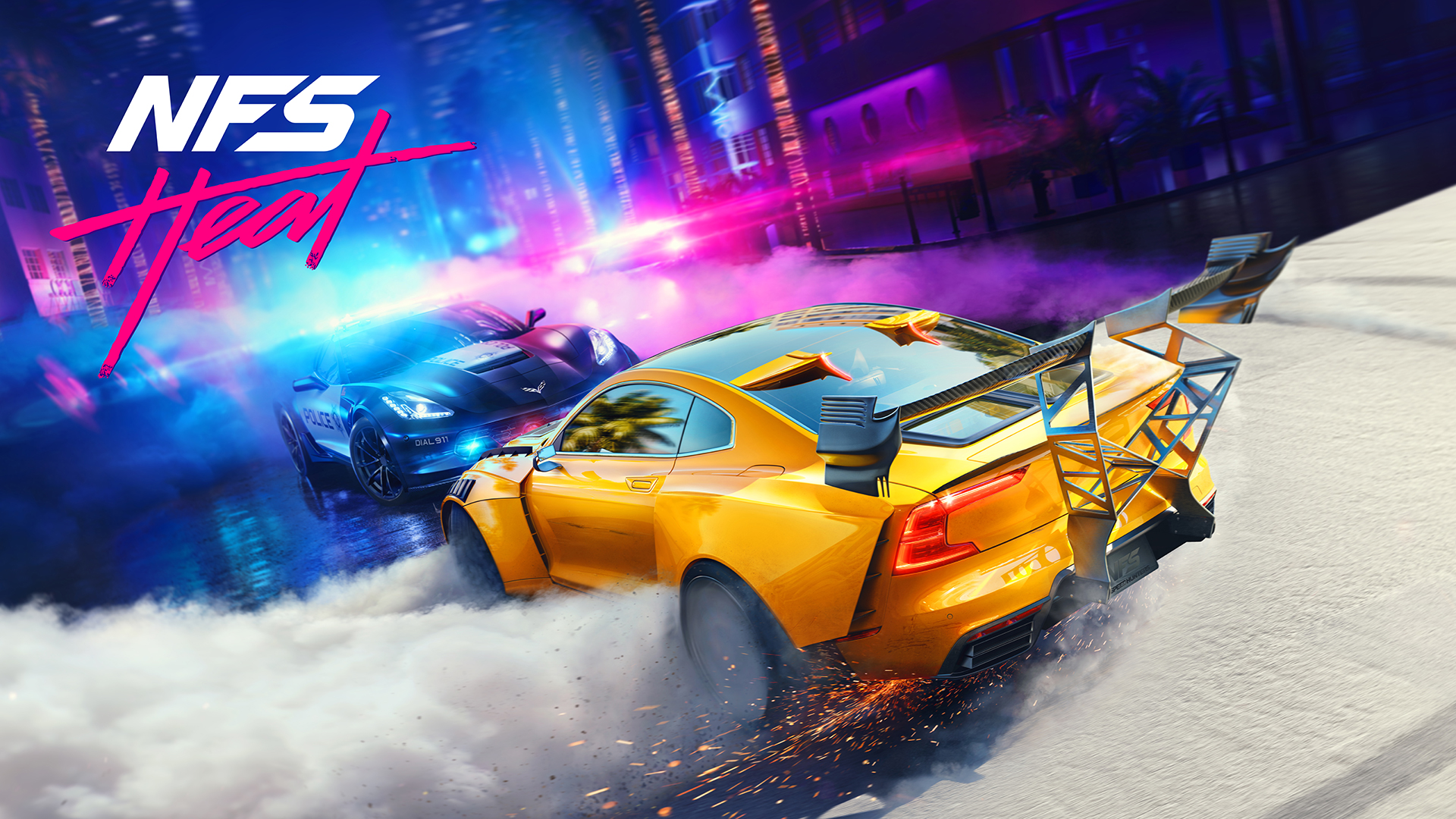For decades now, Need for Speed has practically been synonymous with gaming’s racing genre. For so long it was the first thing that came to mind, and the most popular of all of the arcade offerings. Back then, though, there wasn’t as much quality choice as there is now, and those behind the series were at the top of their game. Over the last decade or so, Electronic Arts’ gas and nitrous fueled behemoth has had some less than stellar finishes, and has sputtered at the gate a bit.
Fast forward to today, and we have a new major entry in the franchise to talk about and dissect. They call it Need for Speed: Heat, and it’s the fourth of its kind from developer Ghost Games. A Swedish development studio that refers to itself as ‘The home of the Need for Speed franchise.” You may recall it once going by the name of EA Gothenburg.
Around the start of this decade, Ghost took the proverbial wheel from the previous developer, and ended up releasing its first iteration in 2013. Those in the know will be quick to blurt out Rivals, and that’s exactly the game we’re talking about. It was fast, fun, and challenging, and was a nice first outing on what was then next-gen hardware. Sadly, while Rivals was never phenomenal, or any kind of masterpiece, it still exists as Ghost’s best game, not to mention the series’ best outing on the PlayStation 4 and Xbox One consoles. That’s with Heat factored in.

After Rivals came a reboot, back in 2015, which failed to set the world on fire. I had quite a bit of fun with the game, but its cheesy live action cutscenes, silly storytelling tropes, repetition and occasionally frustrating gameplay kept it from being great, or even besting its predecessor. That reboot ended up being quite a bit better than what followed, though, as 2017’s Need for Speed: Payback is a game that EA may well wish never saw the light of day. After all, it was one of a couple of releases that made a lot of people viciously turn on them as a company. Why? Greed and microtransactions.
I beat, and reviewed Need for Speed: Payback, after purchasing it myself. Did I enjoy it? Not nearly as much as I had hoped and expected to. It offered fun racing, but seemed nearly impossible to beat without spending real world money, or grinding for quite a few hours. At least, on any difficulty that wasn’t easy. The cars all had numerical levels, and buying (often randomized) parts would increase those levels, but not enough. The kicker was that people were enticed into spending extra real world money in exchange for better parts and less grinding.
With Need for Speed: Heat, Electronic Arts and Ghost Games have thankfully proven that they both learned a lesson from Payback. The problem is that, while this next step is a big one in the right direction, the final product is still lacking in comparison to previous entries and its competition. It’s not as mechanically solid, or as polished as GRID, and it doesn’t come close to the Forza Horizon games. Then again, no racer does. Those are the best of the best.
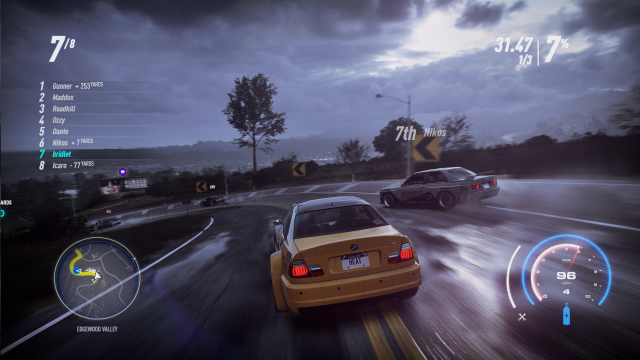
The game’s title evokes thoughts of two different things: warm weather and police. It’s an easy connection to make, and one that was obviously planned. It works, too, because Need for Speed: Heat has lots of imposing cops, and is also set in a fictional version of Miami called Palm City.
In Palm City, players will meet a group of suffering illegal street racers who — guess this — don’t like the cops and feel like they’re being mistreated by them. It’s the same schtick we’ve seen in many of these racing games, and is kind of disappointing. What results is a bland and pretty forgettable storyline about a racer and her mechanic of a brother, who become entangled within a few corrupt cops’ scheme to screw over illegal racers for profit. There’s a bit of depth, but not a whole lot, and too much of the dialogue ends up involving one character whining about her car having been stolen and how she has to walk to get a burger.
There are some cutscenes, most of which take place in the massive garage that the siblings’ father once owned and operated. Others occur while tailing cops, or during other such ‘missions.’ There’s also a very similar animation that plays before each and every race, and seems to show the same two NPCs walking by the player’s car. In all of these, the character models are mostly fine. At least, that’s how it is for the main cast, who get pretty detailed avatars. The NPCs can look kind of low res and a bit rough, though.
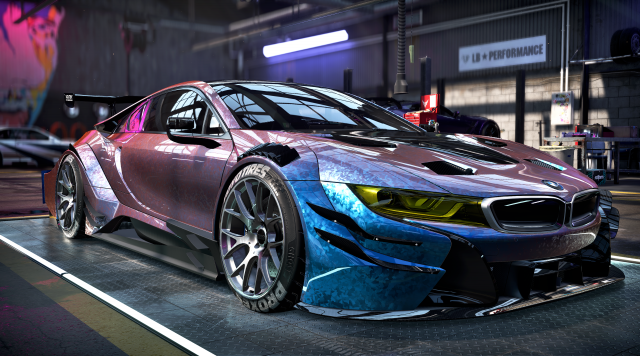
Speaking of characters, I’d be remiss if I didn’t mention that the player exists as a premade avatar. There’s close to ten to choose from, with the options boiling down to gender and race for the most part. Once chosen, the player can then customize his or her avatar, by changing their hairstyles and hair colour, and by purchasing clothing and accessories for them to wear. There’s lots of adidas sponsored gear, but they aren’t the only option.
None of the player characters are exceptional looking, but they do the job, and their unique voice actors are fine. The writing doesn’t give them a ton to work with, though, as it’s nowhere close to award worthy. There’s the expected dudebro stuff, some terribly dumb one-liners (a competitor telling you to pull over if you’re having a stroke while behind the wheel, and that kind of thing) and more. For the most part, though, the writing is serviceable, and does the trick for this game. It’s just that the game, as a whole, doesn’t offer much in the way of a deep, compelling or memorable narrative. As is often the case, it pushes things forward and exists more for that reason than anything else.
The campaign is presented over four chapters, and has been called the shortest Need for Speed campaign in memory by online posters. After reading that, I went in expecting something that I would beat very quickly, but that wasn’t the case. While the story itself isn’t terribly long, the game pads its shortness by requiring you to earn both money and reputation before starting most story races, or missions.
What’s nice is that there are a lot of races to take part in, including many sprint and circuit events. There are even high heat races, which don’t become available until you’ve pissed off enough cops to achieve a heat rating of 3 out of 5. These are supposed to be more challenging events, wherein you’re likely to meet pissed off police who want nothing more than to see you in handcuffs. They’re often willing to risk their lives to achieve this, too, in pretty insane chases that would be called off in real life.

The kicker here is that, whereas other Need for Speed games featured day to night cycles and races that could be undertaken at any time, Heat makes you choose between day and night. It’s different at each time, too.
During the daytime, you’ll race for money. Thus, if you’re hoping to earn enough to buy an amazing new vehicle, you’ll want to spend a while partaking in daytime events.
This is also when some of the secondary story events take place, including a drift storyline and its related challenges. Hell, there are even off-road races to undertake, and car parts to equip to make sure that you won’t be left in the dust by more suited rides. A couple of these dirt-based races are integral to the story, too.
As such, Need for Speed: Heat carries forth Payback‘s three disciplines: street racing, off-road and drift. It just doesn’t make you use different characters for each one. On top of those things, it also has a hefty amount of ‘collectibles,’ by way of discoverable street art, destructible billboards, odd neon flamingos and more.
Night is a lot more high stakes than day, and that’s because it’s where the cops reside. Yes, you read that right: Cops are only really a factor during nighttime.
It’s at nighttime where the player must race for reputation, with limited money being on offer. Reputation is just as important, though, because it’s the way you unlock new story missions. They will often be locked until you get to a certain point, be it 22 (or thereabouts) for the second last and 30 for the finale. Needless to say it jumps quite a bit at the end, forcing you to grind if you haven’t done so already. I felt that I took my time with the game, but still had to play different races for an hour to an hour and a half in order to level up enough to complete the final event. Then again, it didn’t help that I lost some of my rep and money a couple of times.
Need for Speed: Heat has this annoying tendency to punish the player for being busted or having their car obliterated by the police. While I agree that you shouldn’t be rewarded for ‘letting’ that happen, the way the game goes about things is a bit frustrating. For starters, you can only repair your vehicle three times per night, by driving through one of several different gas stations that are spread throughout the game’s pretty large, Miami and countryside map. Furthermore, if you happen to finish a race while in a police chase (which will occur quite often), you’ll have to lose those police before continuing on. This means no going to the garage, no banking rep and nothing of the sort. While you won’t need to replay the race if you’re busted, you’ll lose a good amount of the earned rep and whatever bank you’re carrying.
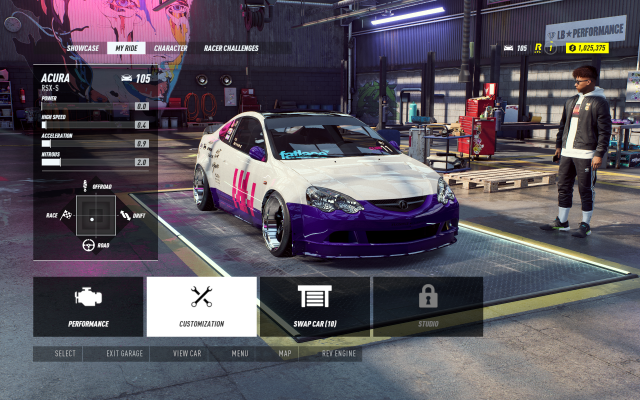
If we were talking about Need for Speed: Hot Pursuit or Need for Speed: Most Wanted — both of which Heat wants to evoke comparisons to — this wouldn’t be too annoying. However, the twenty-fourth installment of the long-running series doesn’t make it easy to lose the fuzz. Hell, it often feels downright impossible. They’ll chase you up and down grassy hills, and will even gain speed while doing so.
I’ve played many of the Need for Speed games, and this is easily the most difficult when it comes to losing a tail. Sure, there were many times where I simply outran a basic cop pursuit during or after a race. However, things quickly became more intense if I didn’t, and by the time I got to heat level 3 I was never sure if I’d be able to lose them at all. Sometimes I’d get lucky and escape by going over a jump, or losing them around a corner thanks to speed and drifting, but it was always quite difficult to do and involved luck. If my heat level got higher, I’d often just assume that they’d eventually get me somehow.
Due to the above, those who are looking for a fun cop chase experience may want to look at previous Need for Speed games, like the aforementioned Most Wanted and Hot Pursuit reboots. They were a lot more fun when it came to cops, and weren’t as punitive or as generally punishing as this one is. These cops can be pretty frustrating.
My least favourite thing about Payback has also been carried forward into this game, and it’s detrimental to the experience once again. I’m talking about car levels, and the need to purchase new parts to increase said levels. That, as well as races and story missions that have suggested levels beside them regardless of difficulty. It’s a really cumbersome mechanic, and one that isn’t nearly as straightforward, or as well implemented as it should be. You can spend quite a while, and quite a bit of money, on a car just to have it not be able to compete on any difficulty but easy. Buying a new car also doesn’t mean that it’s going to have a high enough level, unless you’ve spent hours and hours grinding your rep towards level 50. Many of the better cars unlock at later levels, and it’s shocking how many presumably fast vehicles have lower than expected ratings. Just cycle through the dealership’s offerings and you’ll see what I mean. One car may be level 180, then one four down from it — where the cars should be better — may be level 172, even though it costs more.
I really didn’t enjoy dealing with this design decision again, especially all of the garage time it required. It didn’t help that the campaign difficulty was uneven in spots, with some story races being a breeze and others (I’m looking at you first off-road race) being quite difficult, even on easy, and with an over-leveled car to boot. What makes all of this easier to digest, though, is the fact that it doesn’t take as long to level up or earn enough money to buy new parts as it did before. Not to mention the fact that they’re not randomized, or made part of a slot machine of sorts. Plus, there are no microtransactions to worry about.
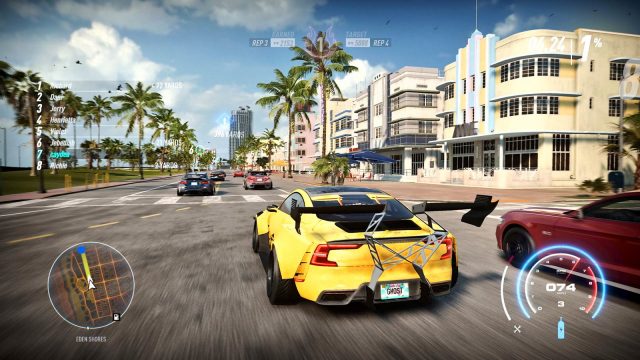
The cars, themselves, are downright beautiful. If I was a car guy, I’d certainly be in my element looking at the many nice rides on offer here. They’re all stunning, nicely detailed and very, very shiny. For the most part, they all drive pretty well too. I want to say that the handling is great, but I’m unable to, because something still feels a bit off. After playing many hours of GRID and Forza Horizon 4 in recent weeks, it took some time to get used to the weight of Need for Speed: Heat‘s handling. I got better at it as I went along, which is what’s supposed to happen, but even by the end of the game I still felt like it could’ve been better.
Heat gets blistering fast as its campaign events go along, and sometimes it’s too fast for its own good. There are pulsing neon markers that tell you to turn or drift either right or left, but sometimes you’ll be going too quickly to react. This is generally caused by driver error, but the roads aren’t always the best at setting you up for turns either. It’s also easy to miss them while dealing with traffic and other racers.
The drifting model is borrowed from Ridge Racer, and requires you to double tap the acceleration trigger to enter into a drift. This is generally a pretty easy thing to do, and is often quite impressive on a visual scale (especially when the camera swings out to the side with the back of the car), but it’s also not perfect. Issues were minimal in this department, but they still existed. There were times where the drift failed to engage, and times where it was easier to use than others, for whatever reason.
Each time you start this game it will present you with a menu, asking whether you’d like to play online or by your lonesome. I generally went the single player route, because I didn’t want to be bothered by other racers. Those with interest can play an always online game, though, and can even enter into crews with tens of other players. In doing so, one can compete against his fellow crew members in time trials, or work together with them towards a common goal. It’s possible to challenge others to races, too, but Need for Speed: Heat isn’t the mecca of multiplayer racing. It feels a bit lacking in this regard.
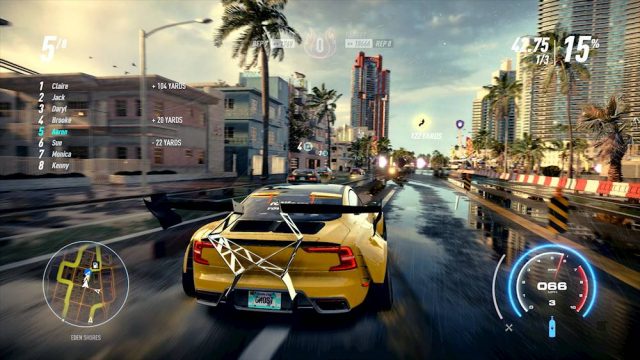
I spent my twenty to twenty-five hours with Need for Speed: Heat using our office’s Xbox One X. On that machine, the game really popped, and was generally downright beautiful. The city was vibrant, the neon really stood out in positive ways, and things looked even better at night when the rain was pouring. Lights really popped, car models shone and everything looked pretty great at most times. There were odd glitches, though, like cars being hit and flying in the air, or flying upwards and then backwards. Those were pretty minimal, however. The most common visual issues I noticed involved the game slowing down a lot whenever I got busted, almost to the point where it momentarily froze. Similar slowdown would also occur during certain cutscenes, where pop-in was also prevalent.
There’s an incredible sense of speed to be found here, though, and it really benefits the game. It does a pretty good job of keeping you on the edge of your seat, as you try to be faster than opponents while avoiding traffic. For whatever reason, said traffic is also more prevalent, and more difficult to deal with, during nighttime.
The sound? Well, the vehicles certainly sound great. They’re loud, boisterous and seem to be quite realistic. They’re complemented by realistic sound effects, helpful police chatter and everything else you’d expect from a game of this ilk, especially if that game is a Need for Speed title. That said, the music is pretty bad. I guess the developers wanted people to really feel the Latin heat of Miami, because the soundtrack is full of mediocre-to-poor Latin music, rap and electronica. There’s nothing else on offer, and if you’re someone who doesn’t like those club genres (like me), you’ll be pretty disappointed. The game also hurts itself by restricting certain songs to daytime and nighttime, as well as replaying the same tracks over and over again.
With all that having been said, Need for Speed: Heat is a notable step in the right direction, following the PR disaster and frustrating experience that was Need for Speed: Payback. It’s not a night and day difference, or a wildly better game, but it’s solid and shows that both the developer and the publisher have learned. Thus, if you’re looking for a solid but unspectacular arcade racing game, this one might be up your alley. Just don’t go in expecting a true return to form, or something that will compete with the best of the best.
This review is based on the Xbox One X version of the game, which we were provided with by its publisher.

